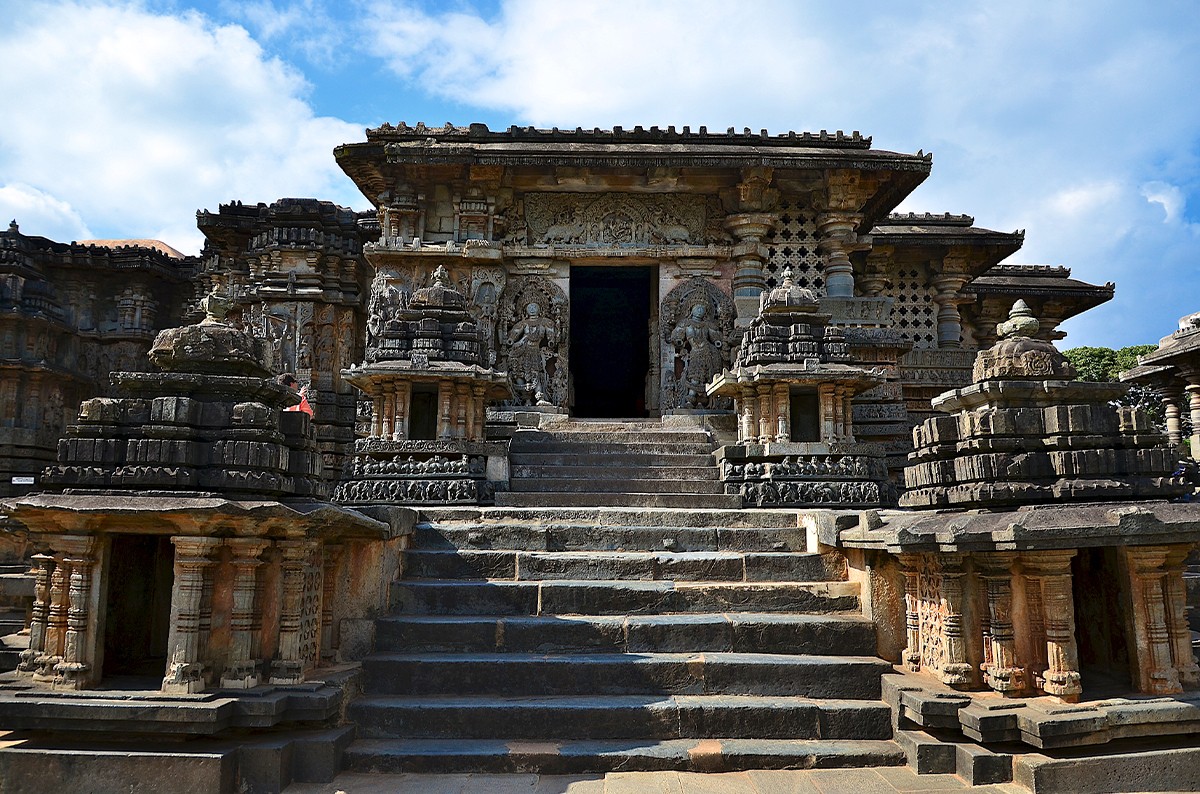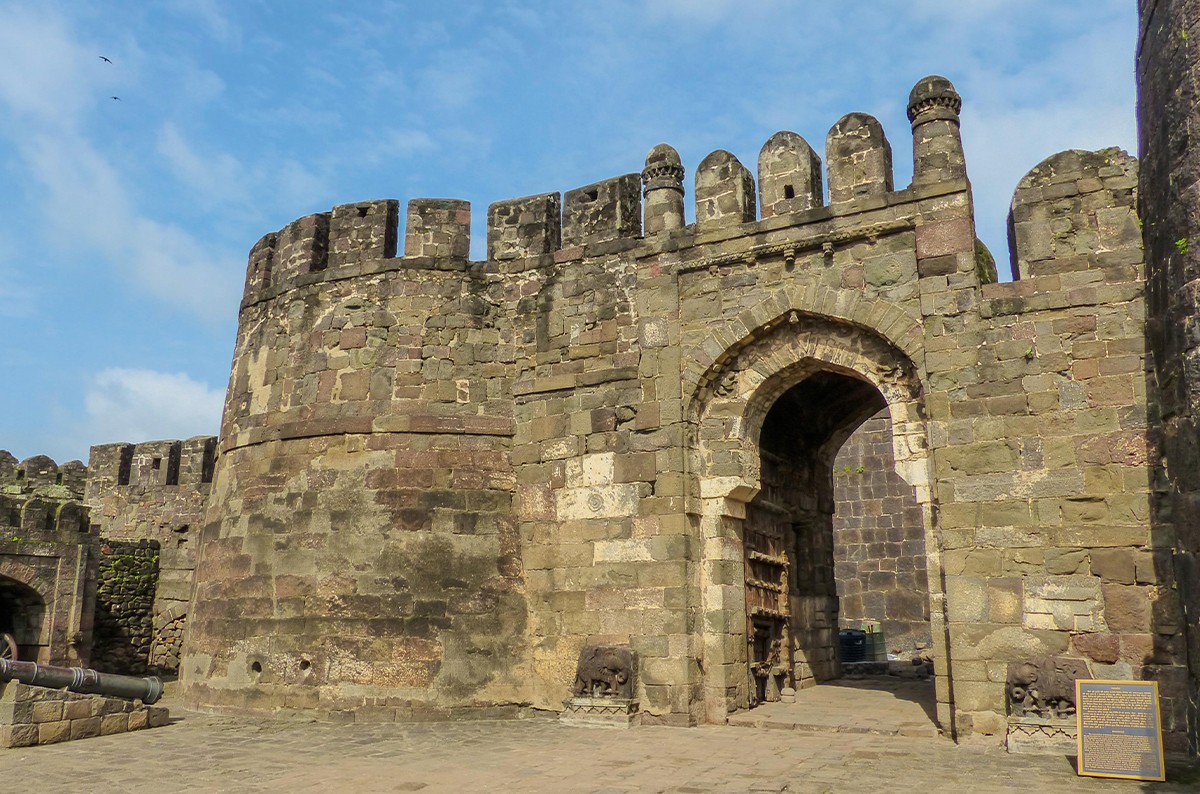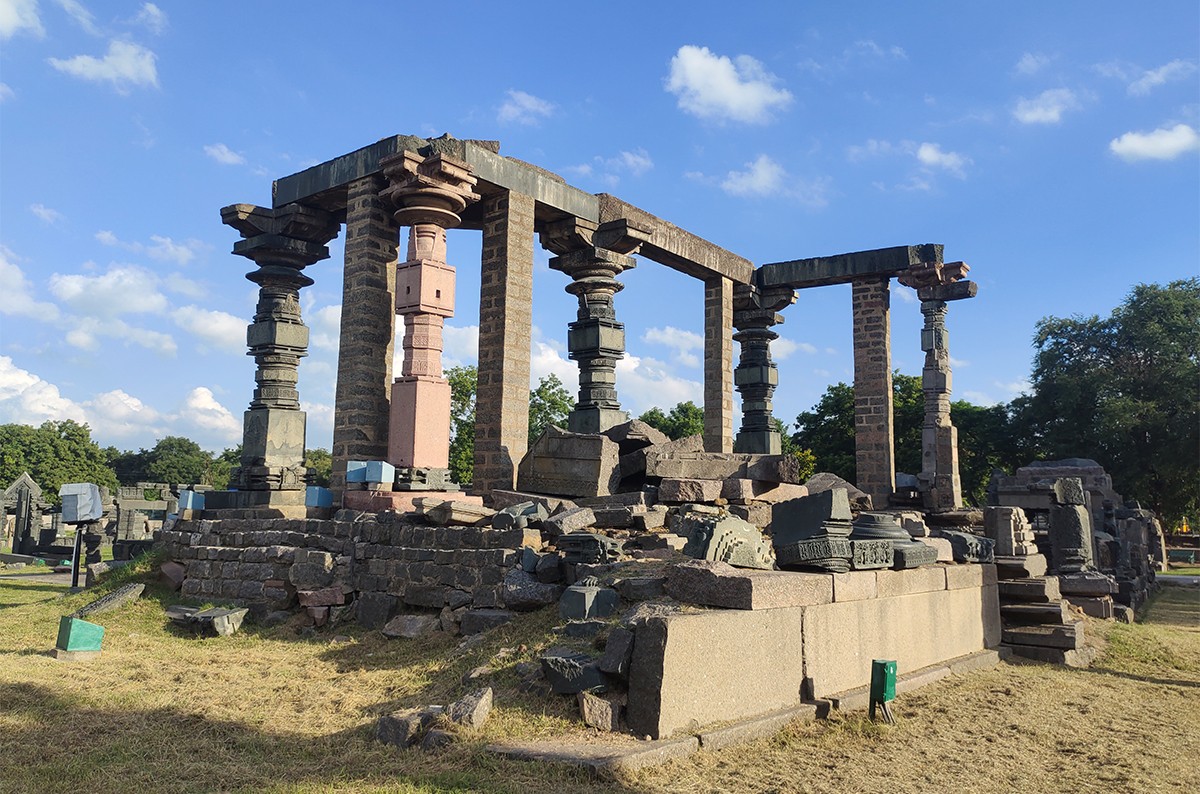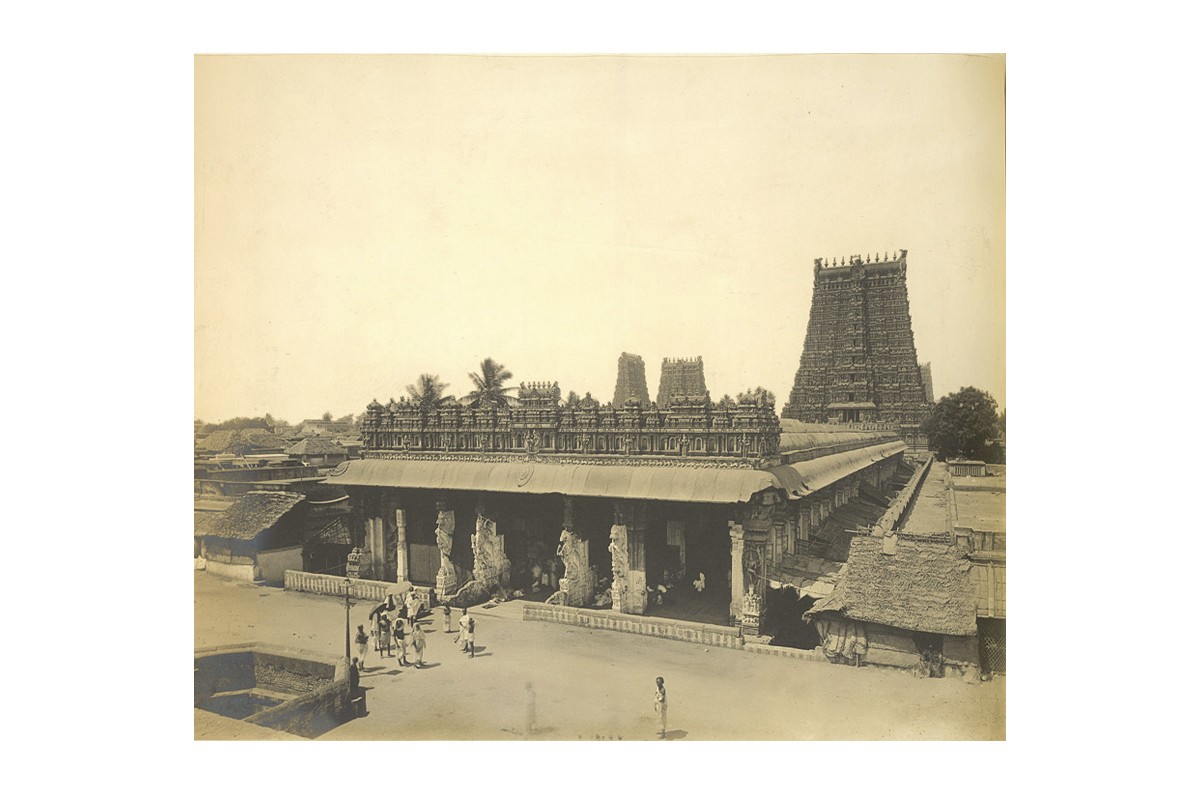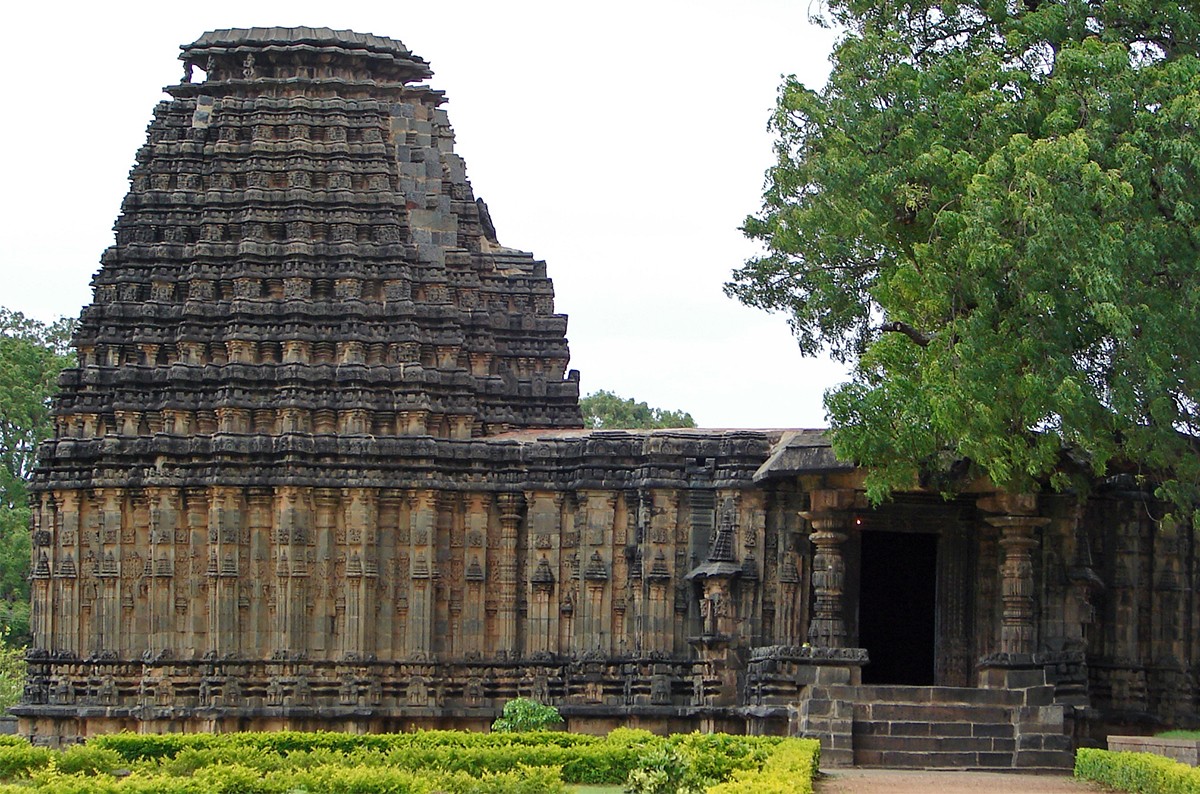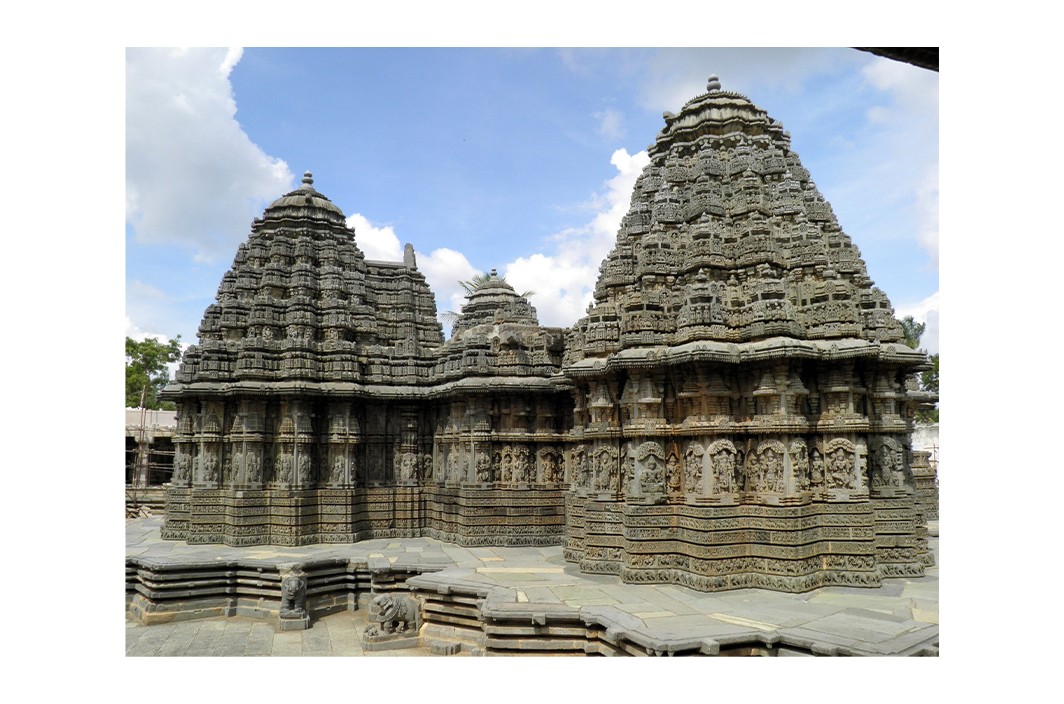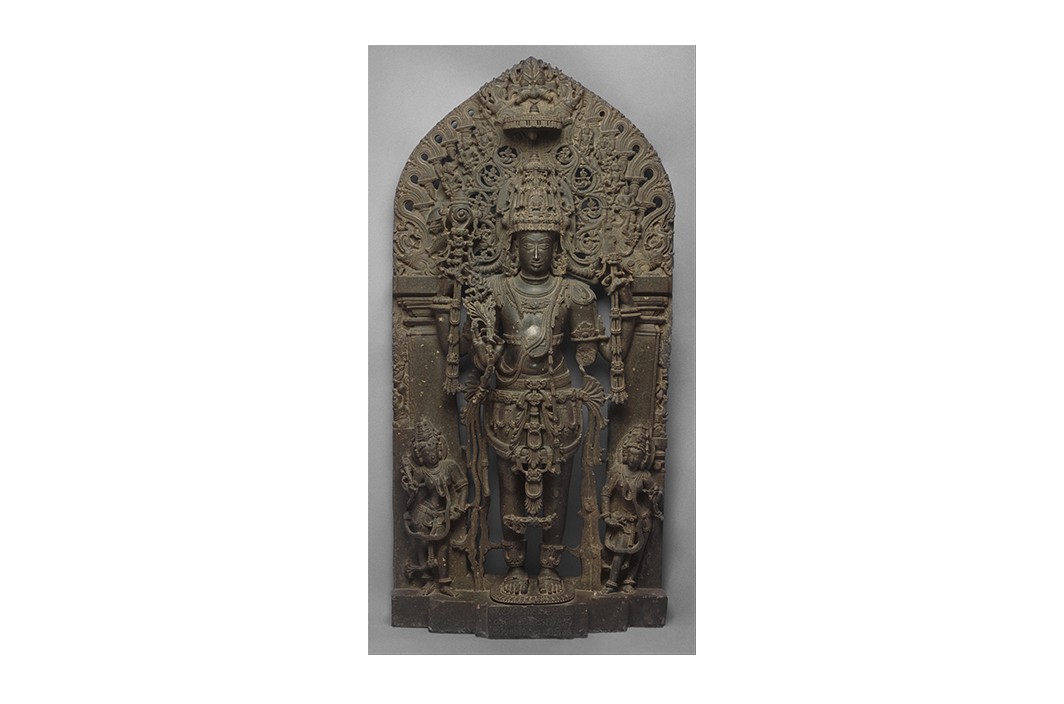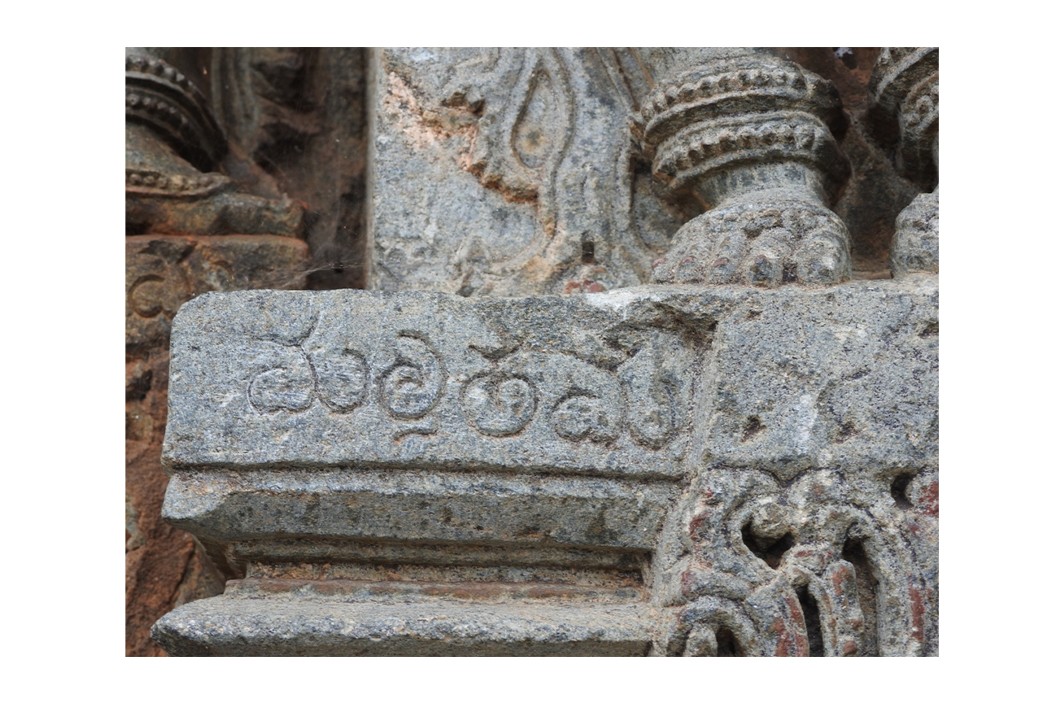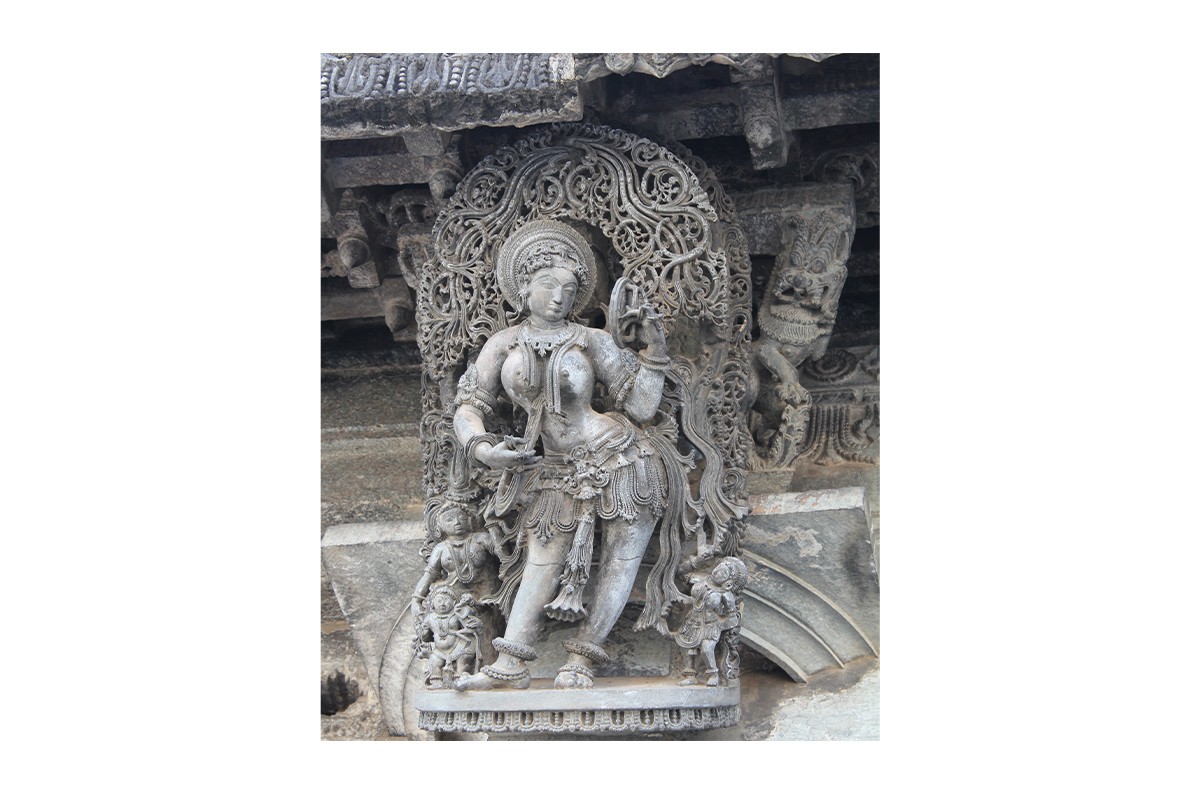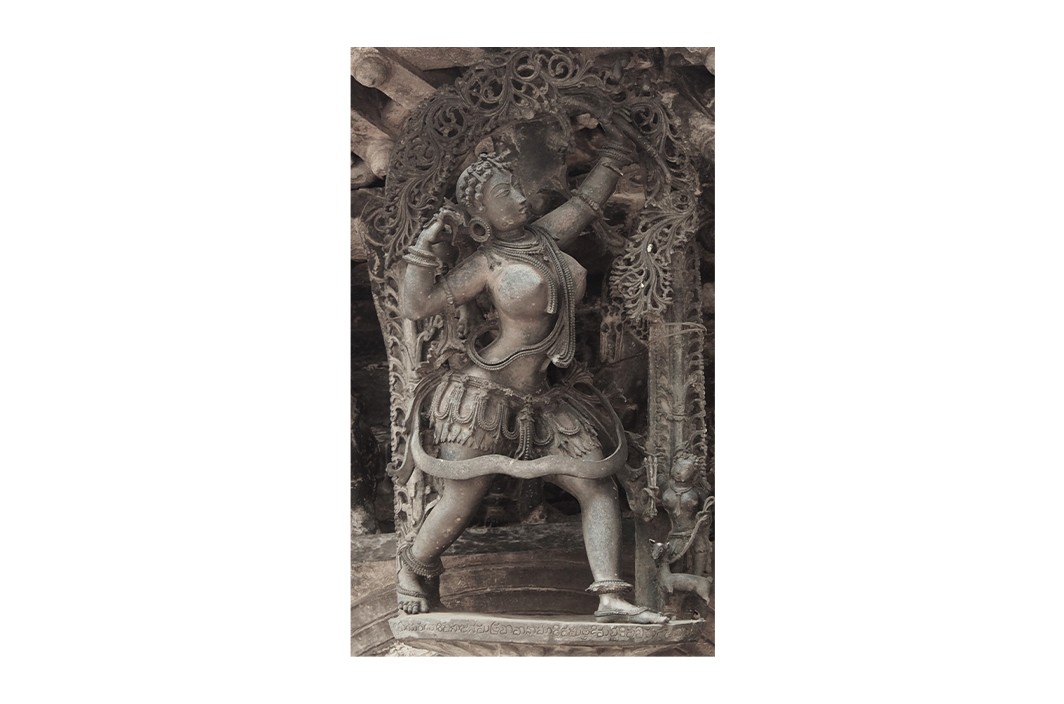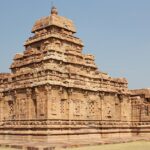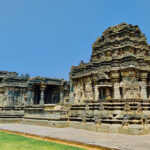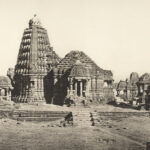Southern India Sees the Growth of Regional Imperial Formations
1150–1250
The Kakatiya, Hoysala and Seuna Yadava dynasties consolidate power across the Deccan region, filling the political vacuum left by the final decline of the Chola and Chalukya dynasties. The Pandyas establish themselves as the predominant power of the Coromandel coast. As regional imperial formations, the Kakatiyas establish their base at Warangal (in present-day Telangana); the Hoysalas at Dwarasamudra (present-day Halebidu, Karnataka); the Seuna Yadavas at Devagiri (present-day Daulatabad, Maharashtra); and the Pandyas at Madurai (in present-day Tamil Nadu). Each political entity patronises its own style of architecture, with the Hoysalas and the Kakatiyas adapting the Karnata Dravida (or Vesara) architectural mode with their own variations.
The Hoysala mode is particularly notable for its extremely ornate sculpture and frequent use of star-shaped floor plans in their vimanas (towers). Unlike most medieval temples, Hoysala temples are inscribed with the names of their master craftsmen, including architects, sculptors, jewellers and carpenters, who come from all over peninsular India, suggesting that the sculptural arts are highly sought after by the court and considered a field for elite competition.
Bibliography
Ali, Daud. “Royal Eulogy as World History: Rethinking Copper-plate Inscriptions in Cola India.” In Querying the Medieval: Texts and the History of Practices in South Asia, edited by Ronald Inden, Jonathan Walters, and Daud Ali, 165–229. New York: Oxford University Press, 2000.
Bose, Kamalika, and George Michell. The Hoysala Legacy: Belur, Halebidu, Somanathapura. Mumbai: Jaico Publishing House, 2019.
Eaton, Richard M. A Social History of the Deccan, 1300–1761 Eight Indian Lives. New York: Cambridge University Press, 2005.
Feedback 
This entry appears in
Art in South Asia
Visit Timeline
Associated Timeline Events
First Published: March 11, 2024
Last Updated: May 21, 2024



